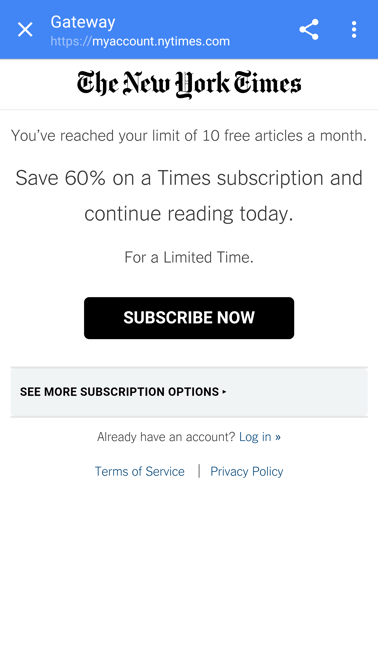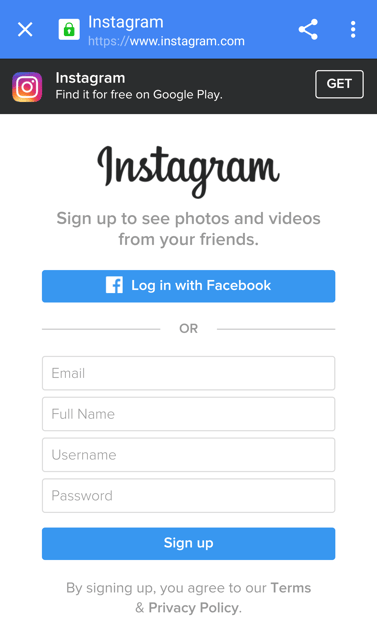
Get weekly
HubSpot updates
Google’s continuing quest to deliver the very best user experience often impacts businesses in a negative way, forcing them to adapt their websites accordingly.
A coupl of weeks ago Google announced on their Webmaster Central blog that websites which serve their users with popups and other ‘interstitials’ (pop-ups and ads) that make it more difficult to access the content may suffer a rankings drop as of January 10, 2017.
“Pages that show intrusive interstitials provide a poorer experience to users than other pages where content is immediately accessible. This can be problematic on mobile devices where screens are often smaller.”
According to Google, examples of the sort of techniques that would make content less accessible include:
“Showing a popup that covers the main content”, “displaying a standalone interstitial that the user has to dismiss before accessing the main content” and “using a layout where the above-the-fold portion of the page appears similar to a standalone interstitial” - a sticky ad, basically.
You might think, ‘well, fair enough - these pop-ups do negatively affect my user experience.’ However, many businesses from all industries rely on ads to generate revenue online, particularly content publishers such as newspapers and magazines. It will also significantly impact on the viability of display advertising for driving traffic and generating leads.
Some popups are still okay
This update will not affect every single kind of interstitial. The popups that will not be affected include:
- Anything required by law, for example age verification;
- Login dialogue boxes to access content that isn’t publicly indexable, for example anything behind a paywall;
- Banners that use a ‘reasonable amount of screen space’, such as the app install banners you’d find on Safari and Chrome mobile browsers.


How to prepare
So if you own a website that utilises popups, or you’re a business who relies on them for generating traffic and leads, what can you do about this impending update?
Fortunately, unlike with many of Google’s updates, we’ve had plenty of warning about this one.
First things first, start to plan for life after pop-ups, whether that’s ditching them now or, if they’re a significant part of your strategy, putting in place plans for how to replace this tactic. Remember, you don’t need to scrap them on desktop websites (though who’d bet against that change not being far away), just mobile sites.
If you rely on pop-up advertising to generate revenue from your website don’t panic, you can still utilise banner ads, while there are other ways you can monetise your site, including accepting sponsored content (although it has to be clearly marked as such, with any links marked as ‘nofollow’).
How inbound marketing can help
If one channel for lead generation is being shut off, it’s important that you identify a new one that can plug the gap. By creating high quality content that offers genuine value to your target market, you can continue to drive visitors to your website.
What’s more, if you’re able to get this content ranking organically for relevant search phrases, then this strategy will be much more cost effective than display advertising. After all, organic clicks are free!
Use the next four months to plan a comprehensive inbound marketing strategy, including what questions and problems you can target with content and how to promote it (social, paid, link building, etc.) without display advertising.
To find out how to run a successful inbound marketing campaign, download our free whitepaper below.

